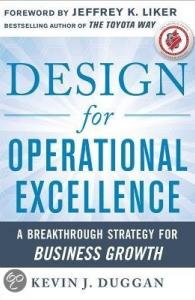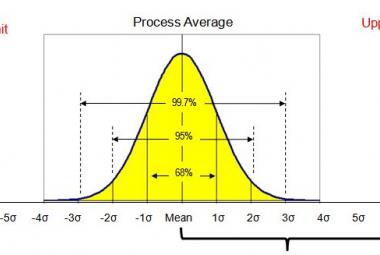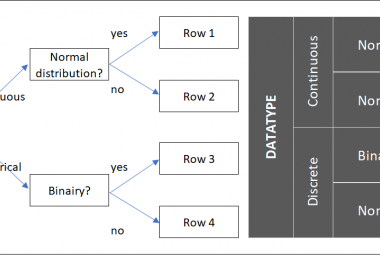In his book Design For Operational Excellence (Duggan, 2012), Kevin J. Duggan describes the missing part of many lean programs: creating opportunities for business growth. Yes, lean has to do with reducing waste, but why do we want that? The answer is business growth.
In this book, Duggan describes different questions that help us think about the improvement activities we have and how to improve our improvement plan. This article describes the two parts of the book that inspired me the most: how to design a self healing flow and the 9 steps of value stream mapping in an office environment. Because only when there is a self healing flow, management can focus their attention on growing the business.
Part 2 of the book describes nine questions that help give direction to a lean program. Duggan writes, that all organizations that achieve operational excellence, find ways to answers these questions correctly. The questions that inspired me the most are about DESIGNING SELF HEALING FLOW.
Why do we want to implement flow? In my article about one piece flow I described the many examples of one piece flow, but one important aspect was not mentioned: the ability to react when flow stops. Yes, flow influences quality, costs and flexibility positively, but this is not the main reason according to Duggan. The main advantage of one piece flow, is seeing when the flow stops, so that action can be taken.
The second question Duggan describes is: why does flow deteriorate? Many companies who have implemented flow, are not able to stick to the standards and maintain the flow. Duggan describes the goal of designing a “self-healing flow”, a flow that heals itself when it is broken.
This means, the people who work in the process are able to react to problems of the flow without the need for management attention. Management attention the worst possible way of healing the flow. It is like a doctor prescribing medicine to a patient. The flow is sick, you go to a manager (the doctor) and he will tell you what to do.
There are two problems with this way of working. First, there is the domino-effect. As soon as one department starts to leave the standard, all other departments in the same value stream have to do the same. E-mails, telephone calls and even meetings are necessary to discuss this extraordinary situation. All this communication is not only none value adding, they also prevent all people involved from working on their own flow, which means, that stopping the flow of one process leads to other processes leaving the standard, and thereby stopping the flow there.
The second problem with manager intervention is the dependency syndrome. When management pays extra attention to the flow, by means of planning meetings, sending out new priority lists and production plans, people slowly forget how the process was designed. This leads to chaos as soon as management does not pay attention to the process anymore.
The solution to these problems lies in training teams in solving their own problems. This means, that there should not only be standards about how the process works under normal conditions, but also for when the flow has stopped. When people know how to react to stoppages of flow, and solve their own problems, there is no need for extra meetings, production plans, or e-mails, reducing the impact of the stoppage to a bare minimum. This is what Duggan describes as a self-healing flow.
Tools that help to visualize the stoppage of flow are 6S (workplace organization) and team boards (visual performance boards). To make it all work, it is not just the production environment that needs standards, the office processes need to visualize their flow as well.
The second topic that I liked the most in this book are the 9 GUIDELINES FOR OFFICE VALUE STREAM MAPPING. These are a little different from the 8 steps of value stream mapping which Duggan defined for the production environment.
What is the takt time for the service? Just like in the production environment, the first task of the team is the map customer demand. How often is a service asked for? One could already think about the complexity of the mix in this step. For instance: we can deliver 5 normal orders and one special order per day.
Where can we implement one piece flow? A paper process that needs signatures for approval of a fixed group of people is a process in which one piece flow can easily be implemented. Create a weekly meeting in which the entire team meets, and sign off all paperwork in one go.
Where can FIFO be used? In situations where one piece flow is not possible, FIFO should be used to determine the sequence in which people work. Files and orders should be sorted on date to be able to keep this sequence.
Where can we use work flow cycles? Work flow cycles are fixed moments in which information flows between departments. This short interdisciplinary meetings, people from different departments meet to exchange information. Because everybody knows when the information is shared, there is less need to send e-mails or phone calls.
Where can we implement integration events? These are similar to work flow cycles, but only take place once every month or even quarter. This are interdisciplinary meetings where projects are handed over between R&D and production, of where projects are officially closed and results are shared.
How can we define standard work? The need for standards was already discussed above. The challenge is to document both what needs to be done and when. This is a bigger challenge in the office environment because people from supporting roles are used to being able to decide for themselves when to work on what. More information of standard work in the office can be found in the article: leader standard work.
How can we define the pace maker? Just like in the production environment, the goal of an office process is to have only one signal that triggers the process.
How can we implement pitch? The pitch is the visual management tool to visualize whether the flow is on time. After each work flow cycle, information has to flow, otherwise the flow stops. One example of information that should flow after a work flow cycle, is the release for orders for the next interval. Whenever the decision is taken and the orders are released, a signal can be put on the team board to show that everything in the order release process is ok.
How do we deal with changes of customer demand? This is the final question that is related to the self healing flow described above. Every process should have a plan B, a way of dealing with problems to prevent the entire organization to leave their standards to solve this problem.
Design for operational Excellence is the crown on the different books that Duggan has written over the years. Many of the lessons that he described in other books (like “Creating Mixed Model Value Streams”) are summarized in this book, which makes it a very informative book, which should be on every lean managers’ shelf.
Continue to:
The Toyota Way to Lean Leadership - J.F.Liker & G.L.Gavis
REFERENCE:
Duggan, K. J. (2012). Design for Operational Excellence. New York: McGraw Hill. (order this book)












